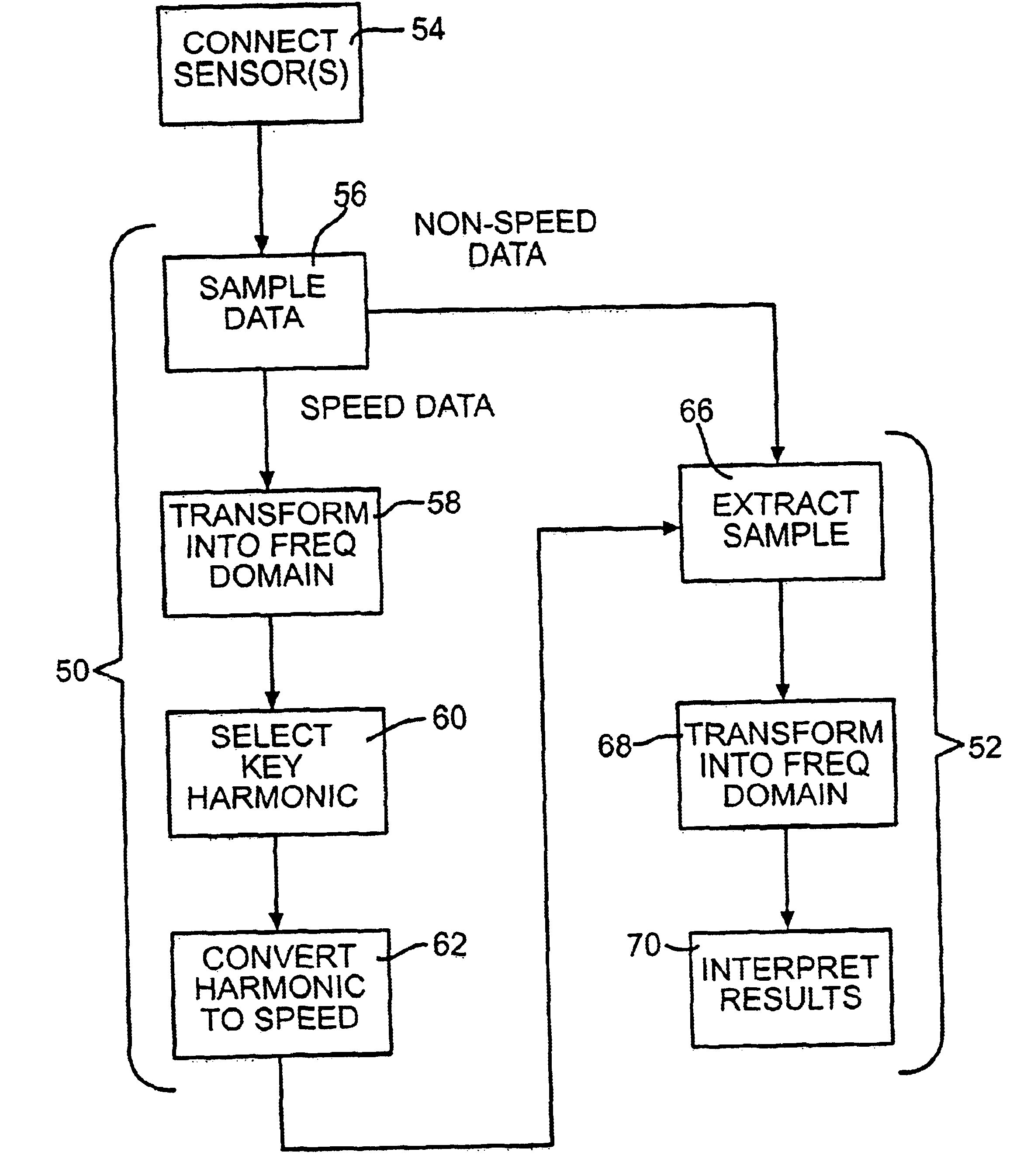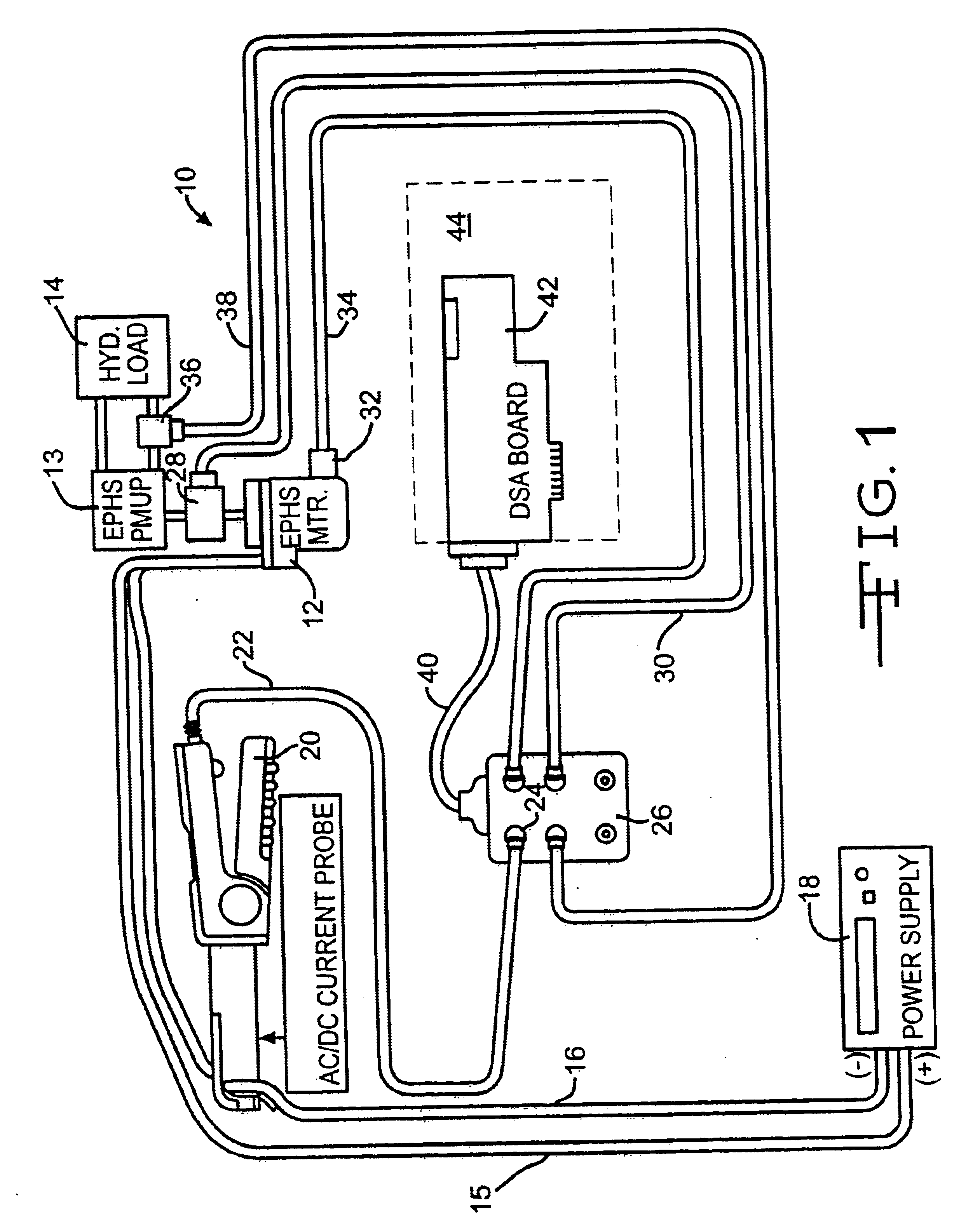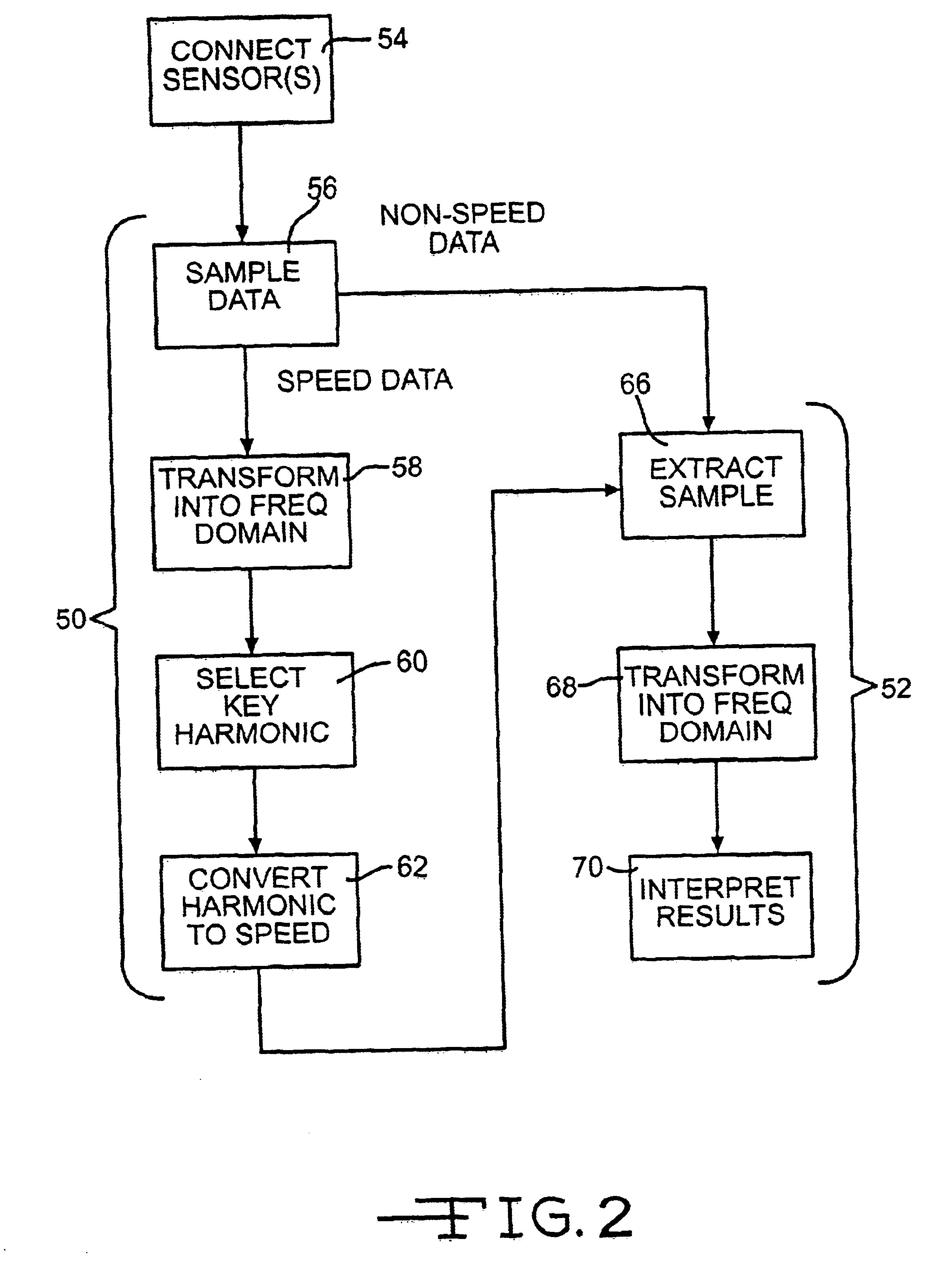Method and apparatus for determining the rotational rate of a rotating device
a technology of rotating devices and rotational rate, which is applied in the direction of motor/generator/converter stoppers, dynamo-electric converter control, instruments, etc., can solve the problems of unnecessarily adding to the complexity and cost of motors, unfavorable inspection of the internal of the motor, and the inability of the motor shaft to be used for motor speed measurement, etc., to achieve the effect of preventing access to the interior of the motor, low cost cos
- Summary
- Abstract
- Description
- Claims
- Application Information
AI Technical Summary
Benefits of technology
Problems solved by technology
Method used
Image
Examples
Embodiment Construction
Referring now to the drawings, there is illustrated in FIG. 1 a schematic drawing of an apparatus 10 for measurement of the speed of a brushless switched reluctance DC motor 12 for an EPHS system. While the motor 12 utilized in the preferred embodiment is a switched reluctance motor, the apparatus also can be used with other types of electric motors. The motor 12 includes a control circuit that selectively energizes the motor stator windings (not shown) to generate a rotating magnetic field. The energization is accomplished by electronic switching of the DC voltage supplied to the motor. Accordingly, the motor current will fluctuate with the switching. As shown in FIG. 1, the motor shaft is mechanically connected to an EPHS pump 13 that provides a variable mechanical load to the motor 12. The motor includes a control circuit that senses the mechanical demand of the pump 13 and generates a rotating electric field to match the demand. The pump 13 also is connected to a hydraulic circu...
PUM
 Login to View More
Login to View More Abstract
Description
Claims
Application Information
 Login to View More
Login to View More - R&D
- Intellectual Property
- Life Sciences
- Materials
- Tech Scout
- Unparalleled Data Quality
- Higher Quality Content
- 60% Fewer Hallucinations
Browse by: Latest US Patents, China's latest patents, Technical Efficacy Thesaurus, Application Domain, Technology Topic, Popular Technical Reports.
© 2025 PatSnap. All rights reserved.Legal|Privacy policy|Modern Slavery Act Transparency Statement|Sitemap|About US| Contact US: help@patsnap.com



